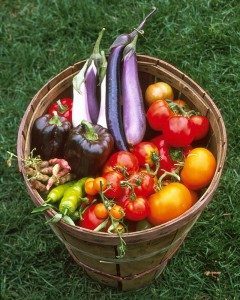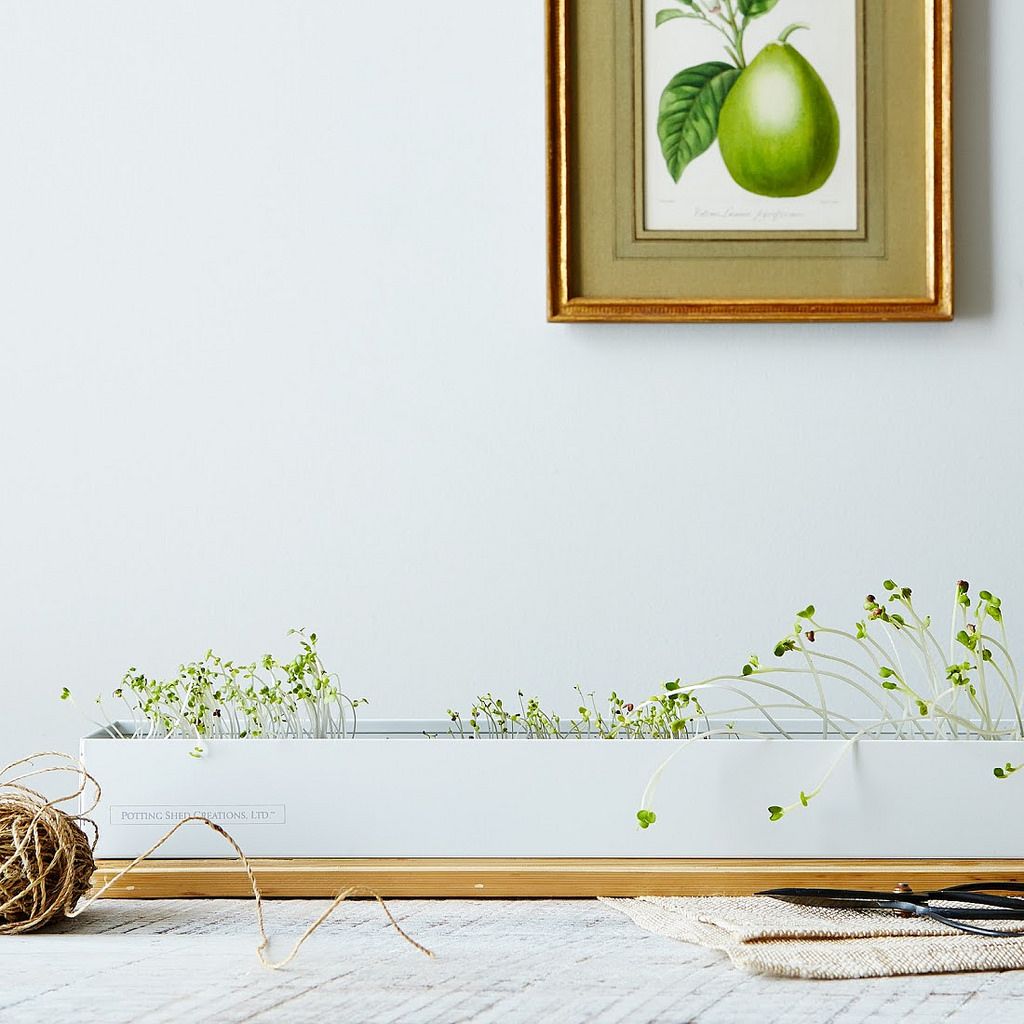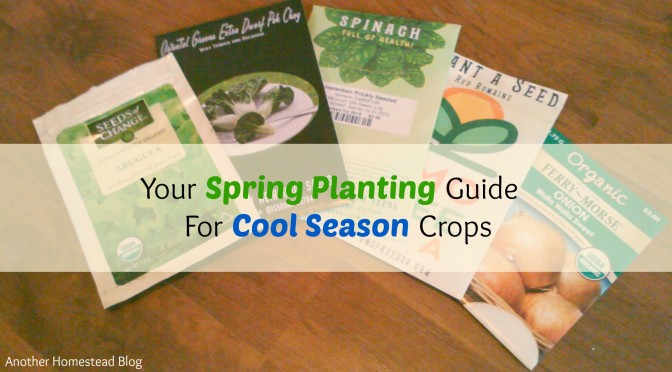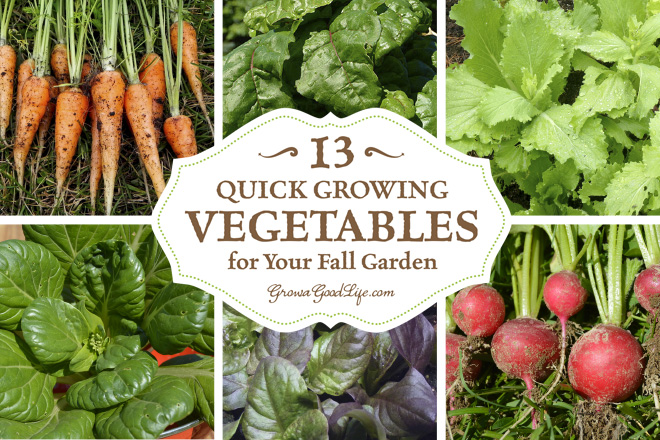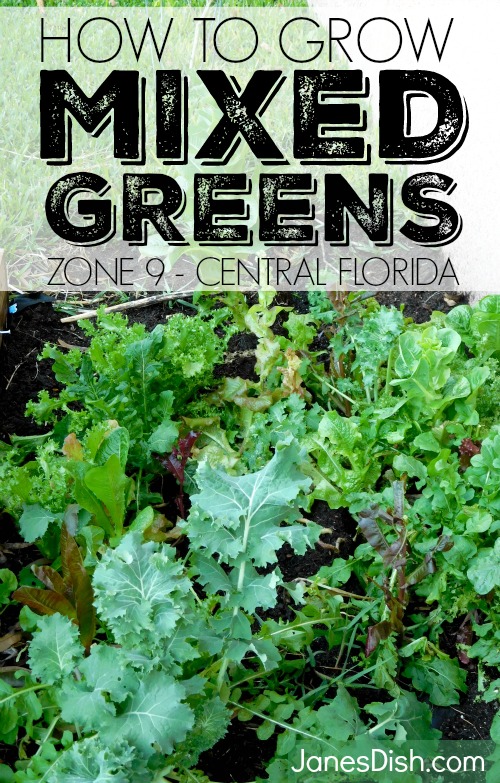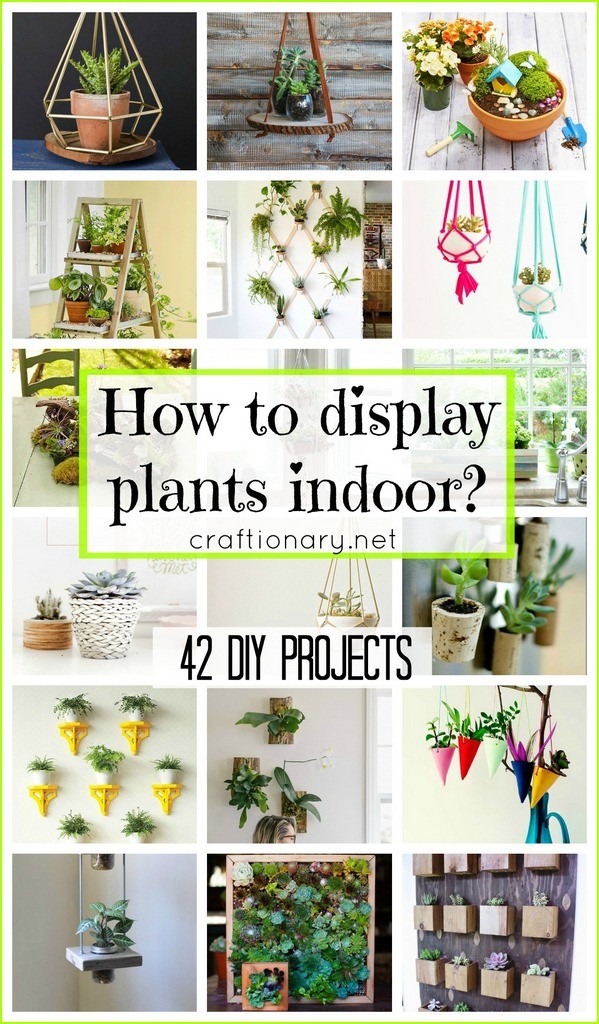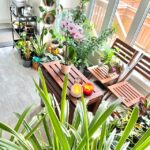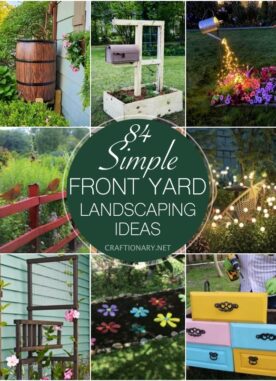This post may contain affiliate links. Please see our full Disclosure Policy for details.
This is my first-time planting vegetables in the backyard and so I was looking for vegetable garden ideas that a starter (beginner, or a new gardener) should know beforehand. I personally think that people should enjoy vegetable gardening to please their soul, to challenge the elements, to challenge their patience, for novelty or nostalgia, but mostly for the joy of seeing them grow.
I have compiled some of the most useful tips, tricks, and hacks on vegetable garden, so all the people with green thumbs can ease their worries while gardening.
Starting a vegetable garden
Generalized Vegetable Garden Tips, Tricks & Hacks
Vegetable garden tips by planet natural on gardening tips by guru.
1.If it’s getting cold you can save your tomatoes by pulling the plants up and bring them inside to a warm dry place to ripen on the vine.
2. Improve your garden by companion planting. Some plants replenish lost nutrients by other plants and some combinations keep pests away effectively.
3. Paint the handles of your garden tools a bright color other than green to find it easily amongst plants. Consider keeping a mailbox in your garden for easy tool storage.
4. Apply compost two to three weeks before planting as it needs time to integrate and stabilize in the soil.
5. You can work ahead of time to make mixing compost into your soil easier. When all the harvesting is done, spread the compost over your garden in late Fall. Cover it with winter mulch such as hay or chopped leaves. By Spring, the melting snow and soil organisms will have the grounds ready for growing vegetables.
6. Save space by hanging melon, squash and cucumber vines onto a vertical trellis or fence. Like vining vegetables consider vertical plant walls.
7. Remove over-ripe garden vegetables to avoid pest infestation as quickly as possible.
8. Onions are ready to harvest when the tops have fallen over. Harvest and store in a cool, dry place.
9. Spread one-to-two-inch layer of mulch around lettuce and cabbage leaves to keep dirt off when growing. This also helps keep the weeds down.
Vegetable garden tips
10. Deposit a handful of compost into each hole when replanting flower or vegetable. This gives transplants extra boost throughout the growing season.
11. Grow garlic, onions, chives and chrysanthemums to help repel insects.
12. Protect plants from frost by repurposing milk jugs, soda bottles and other plastic containers as small covers.
13. Start peas indoors for easy and healthier germination.
14. Work with a better quality soil as healthy soil means healthy plants that can resist pests and disease.
15. Use natural and organic fertilizers and soil amendments that attracts earthworms. Earthworms are extremely beneficial in the vegetable garden. They increase air space in the soil and leave worm castings.
16. Spread diatomaceous earth over soil. It is an excellent organic insecticide that looks like white powder and is used to damage the cuticle, skin and joints of insects. It is also a great slug barrier.
17. Vegetables like kale, cabbage, parsnips, carrots and brussels sprouts grow better after first frost.
18. Cover the stem all the way to the first set of leaves with soil when transplanting tomatoes. This encourages root growth and healthier plant.
19. It is important to read and learn about your location when choosing plants. Plants will do best if they are well suited to your growing area.
20. Water your garden in the early morning to conserve moisture loss, avoid powdery mildew and other fungal diseases. They are often spread by high humidity levels.
Vegetable garden tricks
21. Avoid over watering your plants. It is easier to revive dry plants that are under watered than trying to dry out drowned roots.
22. Consider growing vegetables like garlic, leeks and shallots in containers as they don’t require much space for growing roots.
Gardening hacks
by prim rose on gardening hacks for green fingers.
(Please note: Text and infographic container the same information for easy preference.)
Planting
1.EVALUATE YOUR SOIL – For a rough idea of whether your soil is alkaline or acidic, mix dry soil with distilled water. If the mixture fuzzes when you add vinegar it’s alkaline, with baking soda it’s acidic, and with neither it’s neutral.
2. A TINY GREENHOUSE – Protect fledgling seedlings from milder frosts with a milk container cut in half. Just remember to remove it on warmer days to stop the plants from overheating.
3. MULCHING IS A MUST – A good mulch laid around the base of your plants will protect its roots in winter and reduce the time you spend watering and weeding.
4. RAISE YOUR BEDS – Growing vegetables in raised beds isn’t just aesthetically pleasing, but it also makes for easier harvesting, and the soil warms up easier in Spring.
5. STICK A CORK IN IT – Fill the first few inches of larger pots with old corks to save on soil and reduce its weight.
6. GROW GREEN TOES – Show organizers are perfect for gardeners that find themselves squeezed for space. They work particularly well as vertical herb gardens.
7. HOMEMADE FERTILIZERS – Coffee grounds, egg shells, and banana peels are all household items you throw away that can be used as organic fertilizer.
8. SOIL STOPPER – A simple way to stop soil leaking out of pot’s drainage holes is to line them with coffee filters.
9. BE A LAZY MOWER – A lawnmower that leaves grass clippings on the lawn doesn’t only save time, it also mulches the grass, returning nitrogen to the soil so you don’t need to fertilize so often.
Watering
10. GLASS BOTTLE TO WATER – Water your plants less frequently by burying an upside down glass bottle filled with water about 6-8 inches from the base of the plant.
11. HOMEMADE VEGETABLE JUICE – Water used to cook vegetables is rich in nutrients that help plants grow. Just make sure the water has cooled and there’s no added salt or cooking oil if you’re going to use it.
12. MAKESHIFT WATERING CAN – Pierce a few holes in the lid of a milk bottle with a safety pin or needle and you’ve got yourself a ready made watering can.
13. WATER BOTTLE SPRINKLER – A large plastic bottle with hole punctures, a hose, and a heat gun to soften the mouth of the bottle are all you need to create a rudimentary water sprinkler.
14. DROUGHT-RESISTANT PLANTS – Position drought-resistant plants like alliums and lavender in the hard to reach areas of your garden so you don’t have to worry about watering them so much.
Pests, weeds and wildlife
15. SLOW SLUGS WITH CEREAL – A slug will happily feast on cereals such as oatmeal, which dehydrates it, effectively stopping it in its tracks and providing a delicious meal for birds. Consider these bird feeders and cereal crafts.
16. SLUGS SHALL NOT PASS – It might not be pretty, but you can use the sharp sides of cracked egg shells as a barrier to keep slugs at bay.
17. SAVE THE SPIDERS – Spiders can be more effective than birds at removing pests, so learn to love them, and if you find any in the home carefully relocate them to your garden!
18. WEED WHEN IT’S WET – Pulling weeds from the ground is much easier when the soil is damp – another reason to be grateful for a bit of rain!
19. MAKE A BRUSH PILE – Creating a brush pile with pruned branches that you’d otherwise need to dispose of doesn’t just save time, it can attract beautiful bug catching birds to your garden. Consider these bug hotels and birdhouse ideas.
20. ATTRACT BUTTERFLIES – Encourage butterflies to your garden by providing them with some overripe fruit away from direct sunlight.
Tools
21. KEEP THEIR HEADS IN THE SAND – Keeping the ends of your non-electrical tools in a bucket of sand will keep them clean and rust free.
22. COLOR CODED TOOLS – Mark your tool’s handles with colored tape to identify them in your garden. Consider these garden projects anyone can make.
23. MEASURE YOUR SUCCESS – Mark your rake or other long garden tools so you always have a measuring stick close to hand.
24. RAKE THE POND – Use a rake to pull out weeds and algae from your pond. You can use net to remove it as well but it can get messy. Consider these water garden ideas.
25. TABLECLOTH WHEELBARROW – If your wheelbarrow is otherwise occupied there are worse things you could do than use an old tablecloth to move heavy items like bags of soil.
26. A CORKING HACK – Push old wine corks into a garden rake at the depth you intend to sow your seeds to save you digging individual holes.
27. MARK YOUR VEGETABLES – Create natural vegetable markers with large stones. A marker pen works well enough, but why not add some color to your garden by painting rocks!
And if all else fails
28. CHECK THE MOON – Although lacking in scientific proof, some gardeners swear that the different gravitational pulls experienced during moon phases affect growth.
29. SAY GOOD MORNING – Prince Charles has recognized the benefit of talking to plants for decades. If you’re stuck for a conversation, you can always discuss the weather.
30. GET HELP – Only the most protective gardeners will fail to take great pleasure in getting friends and family to roll up their sleeves and dig in.
How to easily grow an organic vegetable garden?
When growing an organic vegetable garden make sure you have the tools, gloves, trowel, weeding tools ready. Now focus on five essentials by grow organic vegetable garden.
Vegetable garden seeds and garden beds
SEEDS – Organic and heirloom are the best seeds. Make sure the seeds are certified organic or transplants grown from organic seeds. Carefully look at the seed packet to ensures they are not genetically modified (non-GMO). These seeds will produce vegetables that have amazing flavors but may not be the same size.
GARDEN BEDS – Choose to use raised beds for your organic gardens as amending the regular garden soil to remove pesticides can be painstaking. Use pesticide-free intreated wood to make raised beds as chemicals from treated wood may leach into your garden. Bricks and concrete blocks are also great for making raised bed garden.
Vegetable garden fertilizers, pesticides and watering
FERTILIZERS – Organic fertilizers are best for vegetable plants as natural fertilizers allow plants to absorb nutrients it needs at that moment only. Unlike synthetic fertilizers which if applied in excess may burn plant’s roots or leaves.
A natural fertilizer never comes in perfect combination unlike synthetic. For example, 10-10-10 represents synthetic and 4-12-0 represents organic fertilizer. The three numbers represent the amount of Nitrogen (N), Phosphorus (P), and Potassium (K) or NPK in the bag.
- Nitrogen benefits the plant’s leaves.
- Phosphorus helps the plant’s roots to grow and promotes flower and fruit production.
- Potassium strengthens the plant for environmental conditions like cold, heat, or drought.
PESTICIDES – A healthy organic garden has a balance of both good and bad insects that is needed to help your garden grow. Consider naturals ways to repel pesticides. Use plants that deter pests and unwanted insects or critters are marigolds, onion, garlic, and gopher purge. Make homemade insecticide soap or soapy water.
Consider distracting insects and keeping them busy elsewhere. Plant Nasturtiums around any vegetable from the squash family such as cucumbers or pumpkins. They are known to attract harmful pests and keep them away from your plants.
WATERING – Finally consider using rainwater in your organic garden. Use a rain barrel to store the water when it rains. Rain water has essential vitamins and minerals not found in tap water. Harvesting and using rain water in your veggie garden is the best way to get micronutrients to your vegetables.
A vegetable growing cheat sheet
Vegetable growing cheat sheet by good to be home will show you:
When to plant vegetables? How far apart or spacing plant seeds? What vegetables to propagate? Which ones need to be in a greenhouse and which needs to be sown in direct sun? What pot size do plants need? How much distance between thin seedlings? Germination and maturation time of vegetables. What vegetables work best together! Which pests to look out for and when to plant seeds and harvest vegetables!
Vegetables for a plot garden:
- Beetroot
- Borlotti beans
- Broad beans
- Broccoli
- Brussels sprouts
- Cabbages
- Carrots
- Courgettes
- Cucumbers
- French beans
- Kale
- Leek
- Lettuce
- Mange tout
- Onions
- Parsnips
- Perpetual spinach
- Potatoes
- Radish
- Spring Onion
- Squash
- Sweetcorn
- Swiss chard
- Tomatoes
- Turnips
Vegetables for a patio garden:
- Beetroot
- Carrots
- Courgettes
- Cucumbers
- French beans
- Lettuce
- Mange tout
- Perpetual spinach
- Radish
- Spring onion
- Swiss chard
- Tomatoes
Note: Use Propagator Kit or Rootrainer to grow roots/seedlings before planting outdoors.
Planting, care and harvesting:
- Tomatoes repel the caterpillars that chew on cabbage leaves.
- Onion deter most pests.
- Radishes deter cucumber beetles.
- Onions and leeks repel carrot flies.
- Radishes draws leaf-miners away from spinach to chew on radish leaves. This doesn’t harm the radish underground.
- Lettuce tenderizes summer radishes.
How to plan your vegetable garden by Martha Stewart.
Productive vegetable gardening tips for beginners by balcony garden web.
Solutions to common vegetable gardening problems
How to know if your seeds are viable for planting?
Whether your garden is in a windowsill or a raised bed, Trena Heinrich from food52 shares the following tip for starting seeds:
Take a paper towel and run it under water then ring it out. Place 3 to 4 seeds in the paper towel and place it in a warm spot in your house. She usually uses the top of the clothes dryer but you can also use a heating pad set on very low. Within a couple of days if the seeds sprout they are still viable.
Common garden pests and how to manage them!
Fix explains the tricks to get rid of common garden pests in the infographic below. Find all the information on the image or read below as per preference:
Recognize common pests by leaf damage
See the image below for images.
- Deformed leaves or sucking damage is caused by aphids.
- Discolored leaves or sucking damage is caused by thrips and mites.
- Beetles, caterpillars and sawflies chew or skeletonize leaves.
- Cynipids wasps, psyllids, and mites lead to leaf galls and abnormal plant growth.
- White patterns like mines on leaves are caused by beetle, fly or moth larvae.
- Folded leaf is the result of tree crickets and spiders.
- Certain mites or some caterpillars result in rolled leaves.
- Slugs and snails will leave the leaf with chewed areas and slime trails.
Easy and safe kitchen remedies for garden pests
The following remedies are from fix:
- Sprinkle cinnamon on seedlings affected by fungus by damping-off disease. A fungus that proliferates in the damp seedling environment and attacks the young stems and roots.
- Make a garlic plant spray by pureeing two bulbs of garlic. Pour 1/2 cup boiling water over garlic, cover, and steep overnight. Strain, put in a spray bottle, Spray the bottom of leaves daily, every few days, or once per week for all insect pests.
- Orange and banana peels contain d-Limonene which breaks down the waxy coating on ants and aphids and kills them. Cut up peels and bury one to two inches deep in soil. Alternatively, scatter peels around stems or hang from branches.
- Put a small amount of apple cider vinegar in a jar next to plants. Aphids and fruit flies will be attracted, fall in, and drown.
- Hot peppers or ginger contain capsaicin, which burns insects. Combine 1 quart of water, 1 squirt of castile soap and 1 tablespoon of cayenne pepper or ginger. Try on small portion of plant first. Dilute further if it causes leaf damage.
- Mix 3 tablespoons of baking soda in a quart of water and put in a spray bottle. Spray plants every few days until the fungus is gone.
- Put a little beer in a shallow container and place it in the garden. Slugs and snails crawl in but can’t crawl out.
- Mix 5 tablespoons castile soap with 1 gallon of water. Test on small portion for aphids, spider flies and white flies. If the solution damages the foliage, dilute further.
- Crush eggshells and sprinkle them on top of the soil around stems. Slugs, cutworms, and other insects are repelled by the sharp edges.
10 ways to keep weeds out of the garden by life is just ducky.
Why are my plants turning yellow?
Is it pests, over watering, lack of sunlight, dehydration or some other reason. Find out Why are my plants turning yellow by MNN.
There are many reasons why plant leaves turn yellow. Below are some of the most common reasons and ways that you can help.
Vegetable garden common problems
PEST PROBLEM – If you see insects living on the plant or eating leaves you have a pest problem. Spray plant with neem oil or an insect killing soap.
OVERWATERING – Yellow and wilted leaves are the signs of over-watering. Poor soil drainage could result in your plant’s roots drowning. Add sand to soil or replant to a raised bed.
LACK OF SUNLIGHT – Your plants need sunlight if the leaves look faded and droopy. If the leaves aren’t getting enough sun, reposition them to a sunny location.
DEHYDRATION – Leaves look dry and feel crunchy to touch, then they are dehydrated. Plants should get at least 1 inch of water each week. Water your plants regularly.
Plants need nutrients
NUTRIENT DEFICIENCIES – Plant require 13 essential mineral nutrients they absorb through the soil. Here are six nutrient deficiencies that cause leaves to turn yellow and their fix.
- Potassium deficiency: Edges and tips of leaves become yellow they need potassium. Bury citrus rinds in soil at base of plant. Add compost rich in fruit or veggie waste.
- Nitrogen deficiency: Tips and center vein in leaves become yellow they need nitrogen. Add organic compost like manure or coffee grounds to the soil.
- Calcium deficiency: Leaves become misshapen they need calcium. Determine if your soil is acidic or alkaline. For alkaline soil use gypsum and for acidic soil use lime.
- Zinc deficiency: Leaves show signs of light discoloration between large veins they need zinc. Spray with kelp extract.
- Iron deficiency: Leaves become yellow and have small, green veins they need iron. Determine the pH level of your soil and lower the pH to under 7. Then reduce the amount of phosphorus in the soil.
- Magnesium deficiency: Leaves show signs of white stripes along veins they are magnesium deficient. Add organic compost rich in magnesium, or add Epsom salts or lime to the soil.
Preparing the garden and soil
Make raised garden bed by pretty prudent at build raised garden bed.
How to build and install raised garden beds?
Build raised garden beds and more DIY garden projects by craftionary.
For the purpose of easy read please find the information below from the image.
- To prepare the site, get rid of turf and weeds.
- Outline the bed dimensions on the ground with chalkline or string.
- Dig with vertical strokes along the outline, just deep enough to bury about half of your first course of lumber.
- Put down a layer of weed-suppressing landscape fabric that extends to the outer edge of the wooden frame.
- Build each wall separately.
- Then fasten them together and put the bed into position.
- A cap railing that runs around the top of the bed ties everything together.
- Use galvanized pipe straps to mount 1 inch PVC pipe inside the bed walls. Cut 1/2 inch flexible PVC tubing twice as long as the bed’s width. Bend it, mount it and clip a cover in piece.
- A simple framework of hoops and a lightweight cover can extend your growing season in cool areas, conserve moisture in dry areas and protect plants from birds or insects.
- A basic setup starts with a faucet or hose-bib attachment that is essentially a series of valves that prevent back flow into the plumbing. Attach supply lines of flexible 1/2 inch poly tubing to it. Lay the tubing along the beds in line 12 inches apart. Fit sections together with compression elbow and t-fittings. Install drip emitters at 12 inch. Close the end of each line with hose-end plugs and caps.
- Irrigation delivers the water evenly and gently. You can set your timer to water early in the morning. This way less water will evaporate and you resist disease.
Note: for purpose of understanding please refer to the image below.
Tips on planning, building, protecting and irrigating raised bed gardens.
- Bad dirt is out, because you fill a raised bed with a customized soil and compost blend.
- Drainage is built into the bed walls, which hold the soil in place to keep erosion in check.
- Greater exposure to the sun warms the bed, which allows more plant diversity and extends the growing season.
- The sides can be almost any durable building material including rock, brick, concrete, and interlocking blocks.
- Water-use efficiency is maximized.
- Plants can be spaced closely together, which leads to greater yield.
- Weeds are crowned out.
- Aligning beds in straight rows simplifies the installation of an irrigation system.
- Beds should be wide enough to support sprawling tomatoes, but narrow enough to reach easily from both sides.
- A north-south orientation takes full advantage of available light.
What you can and cannot compost by global news at countertop composting infographic 101.
Biodegradable materials make around 40% of all residential waste in Canada. Transform your waste into useful compost. The four key ingredients are air, water, green material and brown material.
What to compost?
Compost green materials rich in nitrogen such as fruits and vegetable scraps, coffee grounds and filters, tea bags, fresh leaves and plants, grass clippings, clover, feathers, seaweed, and horse manure.
Compost brown materials rich in carbon such as corncobs, bread and grains, nut shells, eggshells, shredded newspaper, food-soiled paper towels, dead leaves and plants, hay and straw, pine needles and cones, small twigs and wood chips, sawdust and wood shavings, dryer lint, potting soil, dried flowers, and hair.
What not to compost?
Things that are not for composting include weeds with seeds, diseased plants, sand, coal and charcoal ashes, colored or glossy paper, meat and fish scraps, cheese and dairy products, fats, oils and grease. Pet feces and cat liter, dead animals, large branches, pressure treated lumber and non compostable materials.
How to improve your garden soil by whole food home.
Improve your garden soil with organic materials like banana skins, coffee grounds and egg shells.
Irrigation system for raised bed gardening by pretty prudent.
What, When and How to Vegetable Garden
The neighborhood of vegetables
Infographic explains which vegetables can be planted close to each other and which cannot! Planting sheet companion of plants and vegetables by tips plants.
Flower defenders
To avoid plant planning mistakes being aware of the neighborhood of plants is very important. Use the available space efficiently, save some space in the lot, increase productivity, and avoid damaging cultures by various pests by planting flower defenders.
- MARIGOLD: Scare eelworm away from tomatoes and potatoes. Save wild strawberries from weevil. Frighten onion fly, owl moth and cabbage butterfly off.
- NASTURTIUM: Saves from cabbage butterfly and white fly.
- CHAMOMILE: Protects from cabbage moth caterpillars, cabbage butterflies, aphids and rodents.
- CALENDULA: Protects from the Colorado potato beetle.
- TANSY: Saves from ants.
- PETUNIA: Protects asters from fusarium, and legume crops almost from all diseases and pests.
What not to plant together by ask a prepper.
Vegetable Gardening Calendar by Listotic.com.
Spring planting guide for cool season crops by the frugal chicken at spring planting guide.
Best vegetables to grow in the shade
Best shade tolerant vegetables by mother earth news at shade tolerant vegetables. The following the best vegetables to grow in shade:
- Argula
- Asian greens
- Chard
- Culinary herbs
- Kale
- Lettuce
- Mesclun
- Mustard greens
- Peas and beans
- Root vegetables
- Scallions
- Spinach
Cool season crops ready in 60 days
13 quick growing vegetables for your fall garden by grow a good life. These include:
- Arugula
- Baby carrots
- Beets
- Bok Choy or Pac Choi
- Kale
- Lettuce
- Mustard greens
- Radish
- Scallions or Green Onions
- Spinach
- Swiss Chard
- Tatsoi
- Turnips
10 Foods that regrow with water
Foods that regrow only with water include bok choy, cabbage, carrot greens, celery and fennel. Garlic chives, green onion, leeks, lemongrass and lettuce. These vegetables will continue to grow in water. However, there are plenty of other vegetables which require to be planted into soil once sprouted. You can save seeds of vegetables and fruits to plant as well like tomatoes and strawberries.
How to grow mixed greens by lobotany.
Grow a salsa garden by grow a good life.
How to grow summer squash by pre meditated left overs.
How to grow potatoes
Start with seed potatoes and plant about 8 inches deep. See images for potato leave sprout, 3 plants growing and getting taller. Just before harvest plants wilt and fall over. Notice bulging soil and withered plants. Pull plant with potatoes attached from the ground. You can yield about 15 pounds (34 potatoes) in 100 days from 3 seed potatoes.
Image credit to raised urban gardens.
Secret of endless onion supply by dream garden 101. Plant onions in a plastic bottle with holes for air and sprouts to come out. Water from the top.
How to grow cauliflower in pot by balcony garden web.
Tips for growing Carrots by prepared housewives.
You will also like:
I hope you enjoyed these brilliant vegetable garden tips, tricks and hacks. I wanted to share what I found useful for my first ever experience of planting vegetables this spring, thinking you might find it resourceful too.





